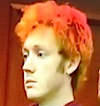Chilling picture of alleged Aurora shooter
Bob Wells | Aug 27, 2012
 Like so many people, I have been fascinated with the unfolding story of James Holmes, the alleged gunman in the July 20 Aurora theater shooting, particularly the mental-health aspects.
Like so many people, I have been fascinated with the unfolding story of James Holmes, the alleged gunman in the July 20 Aurora theater shooting, particularly the mental-health aspects.
I sat motionless, enthralled and uncomfortable, as I read the superb Aug. 26 New York Times investigative piece about the life and mind of James Holmes. Thanks to serious reporting by Times reporters, his mental state is becoming clearer.
This sentence tells the reader what lies ahead in the story:
Interviews with more than a dozen people who knew or had contact with Mr. Holmes in the months before the attack paint a disturbing portrait of a young man struggling with a severe mental illness who more than once hinted to others that he was losing his footing.
Is it not now predictable in hindsight that the Times would deploy major resources (four reporters plus three more researchers are credited) to cover this story? After all, James Holmes is — or rather was — in training to join America’s Mandarin caste, of which the Times editors (rightly) consider themselves members and chroniclers.
Further, I’ve long maintained that Times editors display, in their choice and “play” of stories, both a sense of history and a strong liberal-arts education (the latter of which includes becoming at least an amateur Freudian). Was this crime a reflection of the famous observation by the poet John Dryden: “Great wits are sure to madness near allied, And thin partitions do their bounds divide”? Or does it say something ominous about the traumas of living in our particular historical moment? Still unknown.
And oh — quoth Steve Jobs — “one more thing.” It looks to me like the Times, in this story, kicked the ass of the Denver Post, let alone of local TV news reporters. No surprise there, given the past few years’ hollowing out of the ranks of local news outlets.
Read the NYT story here.

